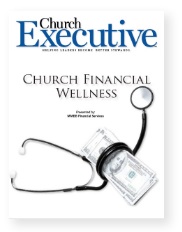
By Alex Kim, CFP®, MBA, CPA
 Accidents happen. We’ve all heard it. We all know it.
Accidents happen. We’ve all heard it. We all know it.
Yet, when it comes to accidents, injuries, or illnesses that sideline someone from work, many people think they only happen to someone else.
Disability insurance replaces part of your salary if a disability temporarily keeps you from performing your job, but this coverage tends to be the distant cousin twice removed of life and car insurance. Many employees buy life insurance to protect their families in the event of death. Still, they don’t think to protect themselves and their families from the loss of income that a health issue can cause when it prevents a breadwinner from working.
Consider this …
• The average long-term disability claim is just under three years, but only 25 percent of Americans have enough emergency savings to cover six months of expenses.1
• Financial crises due to disability are a leading cause of personal bankruptcies.
• Disability is more common than you might realize. One in four 20-year-olds can expect to be out of work for at least a year because of a health problem before reaching the typical retirement age. According to the National Information Institute, 43 percent of all people age 40 will be disabled for 90 days or more by age 65.2
Disability insurance prices often run anywhere from 1 percent to 4 percent of a worker’s yearly salary, but it pays to have this important safety net to help secure your financial future. There are ways to obtain affordable rates.
The long and the short of disability insurance
First, find out if your organization offers group disability insurance. Obtaining coverage through your employer is less expensive than purchasing an individual insurance policy.
Workplaces offer two types of disability insurance. The first is short-term disability (STD), which covers 40 percent to 60 percent of weekly gross pay for up to three or six months. The second is long-term disability (LTD), which covers 50 percent to 70 percent of your salary for up to two to 10 years. Some organization’s STD policies automatically convert to LTD when STD expires, but other employers only offer STD insurance.
Certain organizations also provide their staff group supplemental insurance, which can furnish extra coverage beyond LTD. Like LTD, obtaining supplemental insurance through your job is cheaper than individual supplemental insurance. You will want to look into supplemental insurance at work or on the private market if your employer’s LTD covers less than 60 percent of your salary. That is generally the minimum threshold to protect yourself financially while you are sidelined from work, but your minimum threshold might be higher depending on your specific circumstances.

Going solo
Secondly, keep in mind that buying STD or LTD is less expensive the younger you are because the chances of becoming disabled increase as you age. It’s a good idea to try to purchase STD and LTD as early in your career as possible.
If your workplace doesn’t offer group disability coverage, then look into individual insurance policies, which can be tailored to meet different needs. You might want to consider these customizations:
Make sure you acquire a non-cancelable and guaranteed renewable rider (an add-on to a policy). These protections ensure that once a policy is in place, your premium schedule, your monthly benefits, or your policy benefits will not change during the life of the policy as long as you pay the premiums. Guaranteed renewable stops your insurance from being dropped.
Extend the time when the policy kicks in from 30 days to 90 or 180 days, and you will pay a lower premium. Most plans have waiting periods before benefits begin, so make sure to build your emergency fund to sustain you during the waiting period.
Disability insurance prices often run anywhere from 1 percent to 4 percent of a worker’s yearly salary, but it pays to have this important safety net to help secure your financial future. There are ways to obtain affordable rates.
Obtain a shorter or smaller disability plan than you originally intended if you find that a plan insures you till retirement or for 10 years is cost-prohibitive. Typical policy lengths range from two to 10 years or until you retire. The smaller the policy, the less expensive it will be. Keep in mind your medical history when deciding on the length of your coverage.
Coordinate with one or more people to buy coverage at the same time. You might receive a lower rate. The more people you purchase with simultaneously, the more of a discount you may receive.
Look to Uncle Sam
Next, if you will be away from work for at least a year, you can apply for Social Security Disability Insurance (SSDI). SSDI is not available for partial disability or short-term disability. Apply as soon as possible to reduce the chances of an income gap while your SSDI claim is processed. For more information on applying for SSDI, visit ssa.gov/disability/disability.html.
Last but not least, be sure to read the fine print on your disability policy. Make sure you understand what conditions are excluded from coverage, your waiting period, and the ins and outs of how your policy operates before you sign on the dotted line.
Disability insurance is a safety net that can provide you peace of mind and a financial cushion. It safeguards both you and your family. The monthly premiums might cost you money upfront; but if you’re ever disabled and don’t have coverage, you’ll pay a higher price in lost wages, depleted savings, and possible financial distress.
1Social Security Administration, Disability and Death Probability Tables for Insured Workers Born in 1997, Table A.
2Bankrate.com, August. 20, 2020, James Royal, “Survey: Nearly 3 Times as Many Americans Say They Have Less Emergency Savings Versus More Since Pandemic.”
This article is not intended to be financial advice. The promotional content is for informational purposes only; you should not construe the promotional content as legal, tax, investment, financial or other advice. Please consult your financial advisor regarding your particular financial situation.
Alex Kim is a Certified Financial Planner™ who brings more than 17 years of direct experience in the financial-planning field, and altogether more than 20 years in the financial services industry. His expertise is in helping people better manage their personal financial goals. Alex holds the CFP® certification, along with a CPA. Alex received his BA in Accounting from Pace University and his MBA from Columbia University.


